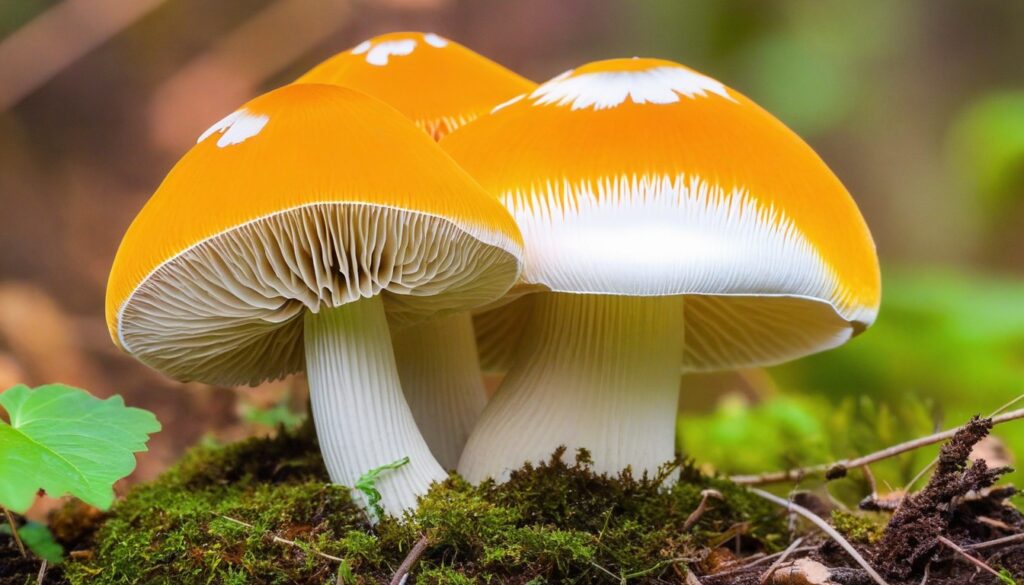Psilocybin mushrooms, also known as magic mushrooms, have been used for centuries for their hallucinogenic properties. While they are classified as a Schedule I drug in the United States, the growing movement towards decriminalization and legalization has made it possible for people to grow them at home for personal use.
Home cultivation of psilocybin mushrooms can be a great way to explore their effects and gain a deeper understanding of their properties. However, it’s essential to approach this process with caution and responsibility, ensuring that you prioritize safety, legality, and responsible use.
In this guide, we will take you through the process of growing your own psilocybin mushrooms at home. From selecting the right strain to creating the ideal growing environment, we will cover all the important steps and considerations to ensure successful cultivation.
Key Takeaways:
- Psilocybin mushrooms are a Schedule I drug in the United States but can be grown at home for personal use in regions where they are legal.
- Growing your own psilocybin mushrooms can be a great way to explore their effects and gain a deeper understanding of their properties, but it’s essential to prioritize safety, legality, and responsible use.
- This guide will provide step-by-step instructions on how to grow psilocybin mushrooms at home, covering important considerations such as strain selection, supply gathering, and ideal growing environment.
Understanding Psilocybin Mushrooms
Psilocybin mushrooms, also known as magic mushrooms or psychedelic fungi, are a type of fungi that contain psychoactive compounds. These naturally occurring compounds, including psilocybin and psilocin, can cause hallucinations and other altered perceptions when ingested.
The use of psilocybin mushrooms has been documented in various cultures throughout history for spiritual and medicinal purposes. In recent years, these mushrooms have gained popularity as a recreational drug, leading to their classification as a Schedule I substance in the United States and many other countries.
Despite their legal status, some individuals still choose to consume psilocybin mushrooms for their reported therapeutic effects on conditions such as depression and anxiety. However, it’s important to note that the use of these substances should always be approached with caution and responsibility.
“The use of psilocybin mushrooms has been documented in various cultures throughout history for spiritual and medicinal purposes.”
Choosing the Right Psilocybin Mushroom Strain
Selecting the right psilocybin mushroom strain is crucial for successful home cultivation. With so many options available, it can be overwhelming to decide on the best strain for your needs. Here, we will discuss some of the most popular and widely available psilocybin mushroom strains to help you make an informed decision.
Popular Magic Mushroom Strains
|
Strain Name |
Appearance |
Potency |
Effects |
|---|---|---|---|
|
Golden Teacher |
Yellow-gold caps with a thick stem |
Medium to high potency |
Strong visual effects, euphoria, introspection |
|
B+ (Be Positive) |
Large brown caps with a thick stem |
High potency |
Mild to moderate visual effects, relaxation, and general sense of well-being |
|
Amazonian |
Brown caps with a thin stem |
High potency |
Potent visual effects, deep introspection, and spiritual experiences |
|
Small bulbous caps with a thin stem |
Extremely high potency |
Intense psychedelic experience, strong visuals, and deep introspection |
Keep in mind that potency and effects may vary depending on growing conditions and individual sensitivity. It’s essential to do thorough research on any strain you plan to cultivate before making a final decision.
Selecting Psilocybin Mushroom Strains
When selecting a psilocybin mushroom strain, consider the following factors:
- Experience level: Some strains are more potent and intense than others, making them better suited for experienced psychonauts.
- Growing conditions: Certain strains may require specific growing conditions to thrive, such as a particular substrate or temperature range.
- Personal preferences: Consider the type of experience you are looking for and the effects you are most interested in.
Overall, choosing the right psilocybin mushroom strain is an important step in the home cultivation process, and careful consideration should be given to ensure a successful and enjoyable experience.
Gathering the Necessary Supplies
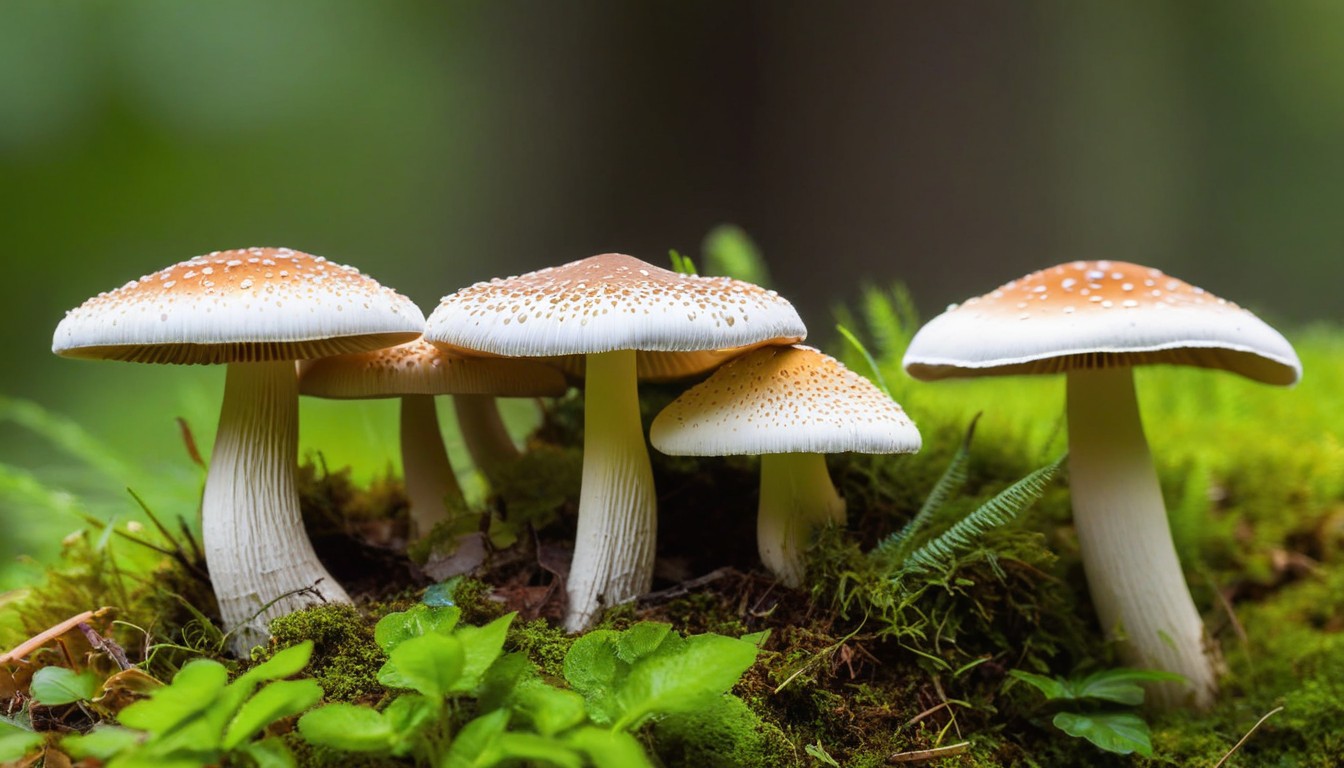
Before you can begin growing psilocybin mushrooms at home, it’s important to gather all the necessary mushroom cultivation supplies and equipment. Here is a list of the essential items you will need:
|
Supplies |
Description |
|---|---|
|
Substrate |
The material on which the mushrooms will grow. Popular substrates include vermiculite, brown rice flour, and coco coir. |
|
Containers |
You will need containers to hold the substrate as well as the fruiting mushrooms. Common options include plastic containers, jars, and grow bags. |
|
Spores or Spawn |
Spores are the microscopic seeds of the mushroom, while spawn is a mixture of mycelium and substrate that has been allowed to colonize. Either can be used to start the growing process. |
|
Gloves and Facemask |
Wearing gloves and a facemask when handling your supplies will help prevent contamination and ensure a sterile, safe environment. |
|
Spray Bottle |
You’ll need a spray bottle to mist the substrate and keep it moist during the growing process. |
|
Hygrometer |
A hygrometer measures humidity levels in your growing environment, helping you maintain optimal conditions for your mushrooms. |
|
Thermometer |
A thermometer will help you monitor the temperature in your grow space to ensure it stays within the ideal range for your specific strain of mushrooms. |
Having all of these mushroom cultivation supplies on hand before you begin the growing process will help ensure that everything runs smoothly and that your mushrooms thrive. Happy growing!
Creating the Ideal Growing Environment
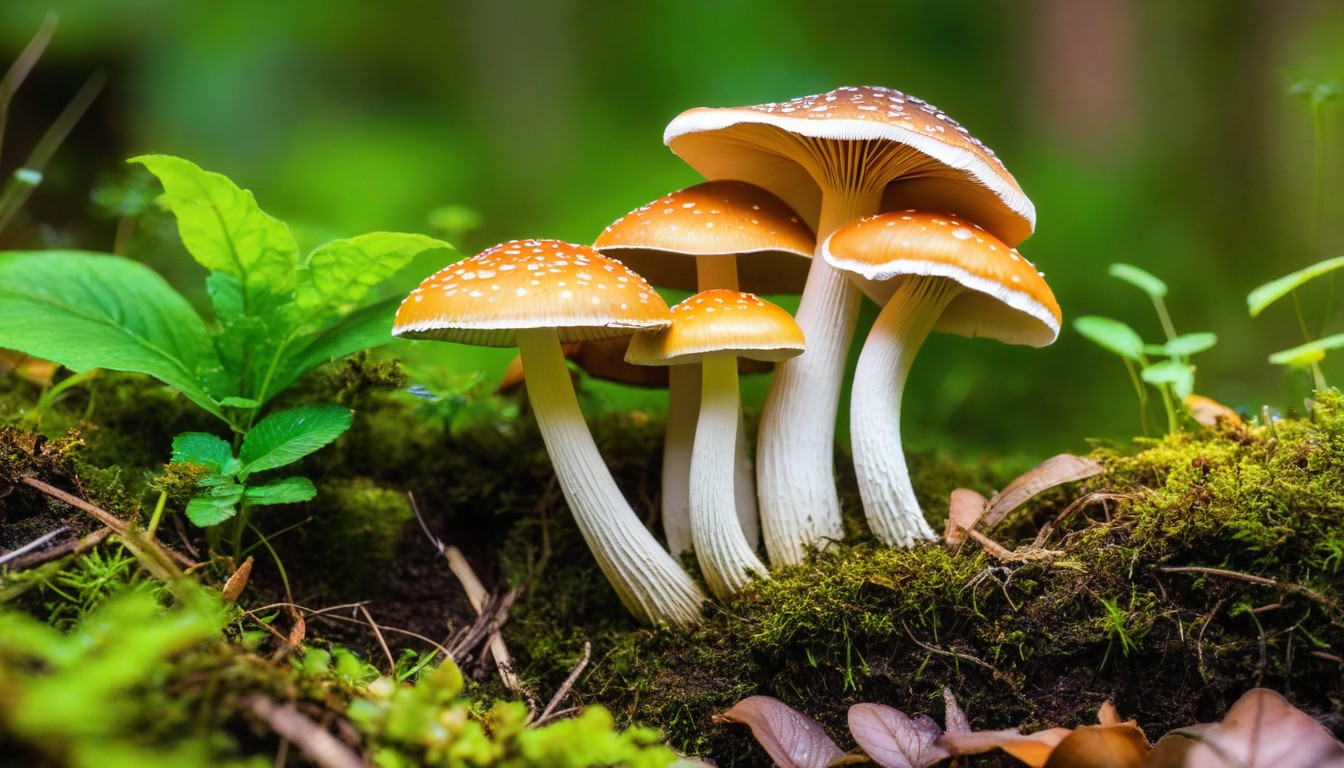
Psilocybin mushrooms require specific environmental conditions to thrive. It’s important to create and maintain the optimal conditions for their growth. Here’s what you need to know:
Setting Up Your Grow Room
Setting up a designated grow room is essential for psilocybin mushroom cultivation. This space should be completely free of contaminants and have proper ventilation. Many cultivators choose to use a grow tent or a closet as their grow room, but any space that can be sealed off from the rest of your home will work.
Temperature and Humidity
The ideal temperature for growing psilocybin mushrooms is between 70-75°F (21-24°C) with a relative humidity of 90-95%. A temperature outside of this range can slow down or halt the growth of your mushrooms. To achieve the ideal humidity level, consider using a humidifier or a mister to keep the air moist.
Lighting
While psilocybin mushrooms do not require light to grow, they do need a light-dark cycle to encourage proper growth and fruiting. A cycle of 12 hours light and 12 hours darkness is recommended. You can use a regular lamp with a low-wattage bulb or invest in special grow lights designed for mushroom cultivation.
Airflow and Ventilation
Adequate airflow and ventilation are crucial to prevent the build-up of carbon dioxide and maintain healthy oxygen levels. A small fan or two can provide enough airflow, and a vent or exhaust fan can help to remove excess moisture and regulate temperature.
By following these guidelines, you can create an ideal growing environment for your psilocybin mushrooms and ensure a successful harvest.
The Mushroom Cultivation Process
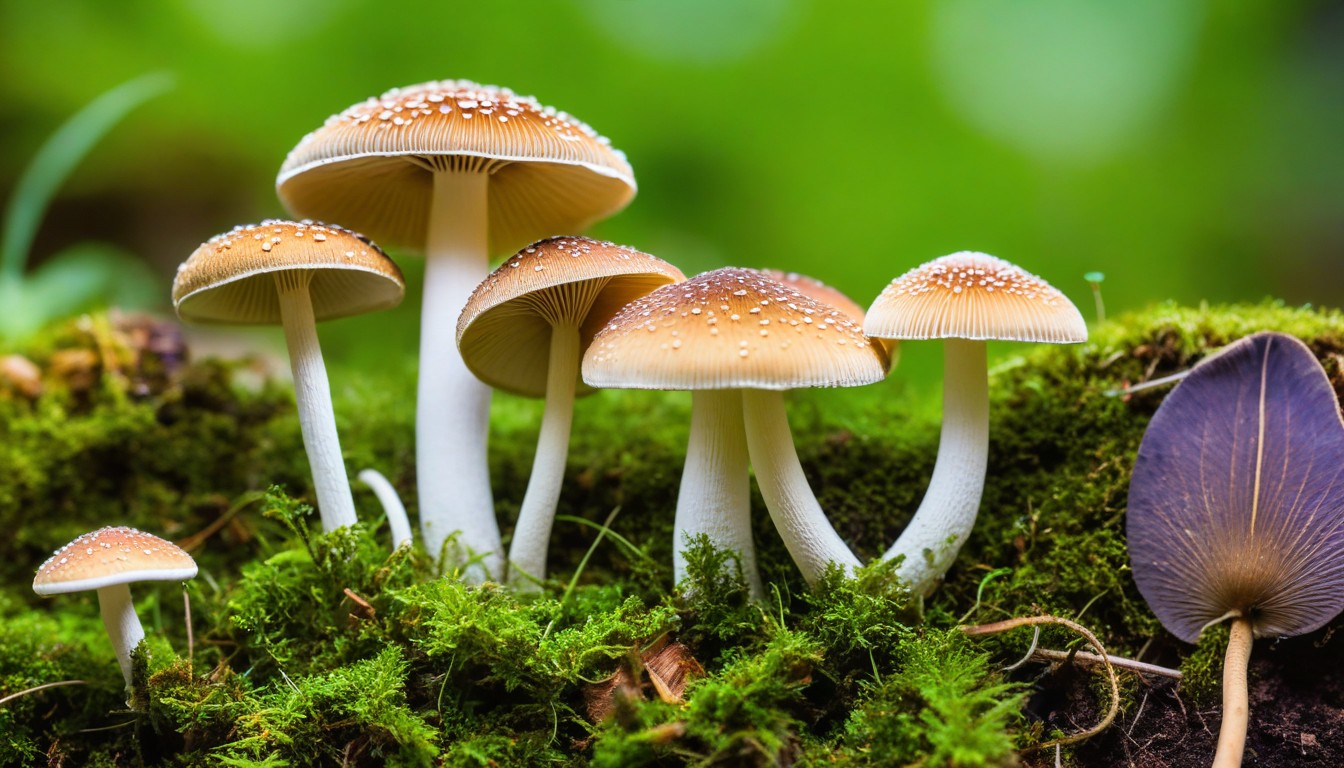
Now that you have gathered the necessary supplies and set up a suitable growing environment, it’s time to start the mushroom cultivation process. Follow these simplified step-by-step instructions for growing psilocybin mushrooms for beginners:
- Prepare the substrate: Begin by sterilizing your substrate, which could be brown rice flour, vermiculite, or other sterile mediums. Once sterilized, mix it with water and fill the jars, leaving enough headspace for inoculation.
- Inoculate the jars: Now that your substrate is in the jars, place spore syringes into the holes made in the jar lids and inject them using a sterilized needle. Once injected, label the jars and incubate them in darkness.
- Colonize the substrate: Over the following weeks, keep the jars at a consistent temperature of around 75-80 degrees Fahrenheit and wait for the mycelium to colonize the substrate. This process can take between 2-6 weeks.
- Prepare the fruiting chamber: Once the jars are fully colonized, prepare your fruiting chamber with the appropriate temperature, humidity, and lighting conditions. Make sure to fan out the chamber regularly for proper ventilation.
- Birth the cakes: Remove the colonized substrate from the jars and place them on a bed of vermiculite in the fruiting chamber. Cover the cakes with a transparent lid and let them grow for a few days.
- Harvest your mushrooms: Once the mushrooms have grown to their desired size, gently twist and pull them from the cakes. Always wear gloves and use sterilized equipment to avoid contamination. Leave the cakes in the fruiting chamber for further flushes.
- Store and dry your mushrooms: Once harvested, place your mushrooms in a dry and cool area, away from direct sunlight. You can also use a dehydrator or fan to dry them further and preserve their potency.
Remember that mushroom cultivation requires patience and attention to detail. If you encounter any issues during the process, consult our troubleshooting guide in section 7 or reach out to an experienced cultivator for help.
Common Challenges and Troubleshooting
While growing your own psilocybin mushrooms at home can be a rewarding experience, it can also come with its fair share of challenges. Here are some common issues that may arise during the growing process and troubleshooting tips to overcome them:
Fungal Contamination
One of the most common problems in mushroom cultivation is the growth of unwanted fungi alongside the Psilocybin mushrooms. This can happen due to using contaminated substrates or containers. It can be identified by the smell or appearance of the mycelium or fruiting bodies, which might turn green, black or brown. To avoid contamination, follow proper sterilization procedures and keep your growing environment clean and free of contaminants. Remove any contaminated substrate or mushroom and keep a healthy distance between the growing containers.
Poor Fruiting
Another common problem is when the psilocybin mushrooms do not develop or grow as they should. This can be due to factors like inadequate humidity, improper lighting, poor ventilation, or incorrect temperature. To solve this problem, ensure that all the required growing conditions are met and the environment is optimal. Pay attention to the temperature and humidity levels, providing proper lighting, and ensuring adequate ventilation to avoid any stale air which can hamper their growth.
Slow Growth
In some cases, your psilocybin mushrooms may be slow to grow, or may not seem to be growing at all. This could be due to several factors, including a lack of nutrients in the substrate, incorrect pH levels, or improper lighting. Ensure that you are using a nutritious substrate, adjusting the pH levels, and providing proper lighting to encourage healthy and rapid growth. Patience is key, as it may take some time for the mushrooms to mature.
Small or Deformed Mushrooms
When the harvested mushrooms are small or deformed, it can be an indication of various problems. This could be due to improper harvesting technique or growing conditions. It could also be due to using contaminated spores or bad genetics. Ensure that you are correctly harvesting the mushrooms and maintaining optimal growing conditions. Use quality spores or genetic material from reputable suppliers to avoid genetic issues.
Poor Psilocybin Content
In some cases, the psilocybin content of your harvested mushrooms may be lower than expected. This could be due to various factors, such as poor growing conditions, harvesting too early, or not drying them properly. Ensure that you are providing optimal growing conditions and harvesting at the appropriate time. When drying your mushrooms, make sure that it’s done properly to preserve potency and freshness.
Remember that growing psilocybin mushrooms requires patience, attention to detail, and a willingness to troubleshoot problems as they arise. With the right knowledge and approach, you can overcome any challenges and cultivate a healthy and potent mushroom harvest.
Harvesting and Storing Your Psilocybin Mushrooms
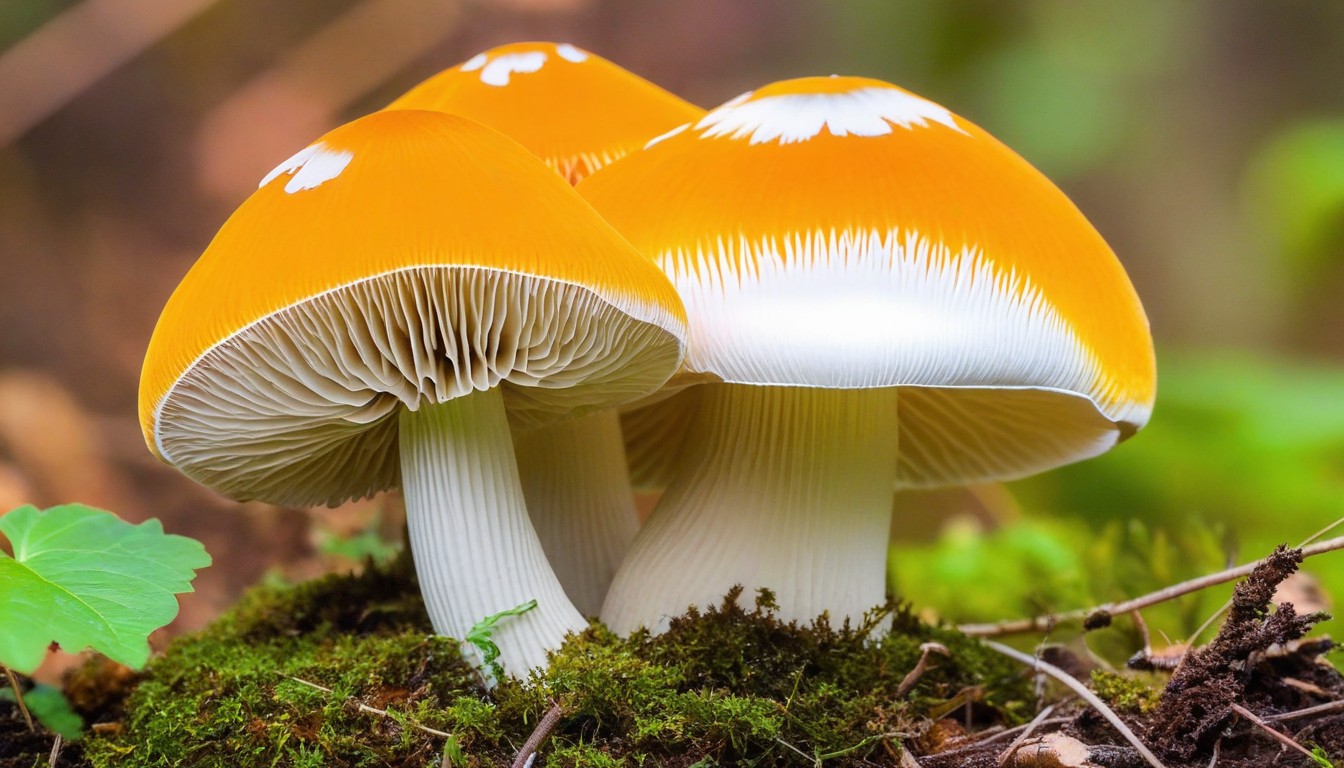
After weeks of patience and dedication, your psilocybin mushrooms are finally ready to be harvested. But, how do you know when it’s the right time to pick them and what’s the best way to store them?
When to harvest psilocybin mushrooms:
When the veil beneath the mushroom cap breaks, that’s the indication that it’s time to harvest. The veil is a thin layer of tissue that connects the cap to the stem. Once it breaks, the mushroom is fully mature and ready to be picked.
Preserving magic mushrooms:
Proper storage of your harvested psilocybin mushrooms is crucial for maintaining their potency and freshness. Here are the steps to follow:
- Use scissors or a sharp knife to cut the mushroom stem at the base.
- Place the mushrooms on a paper towel to dry in a well-ventilated area, away from direct sunlight. This process can take up to several days, depending on the size and moisture content of the mushrooms. Make sure the mushrooms are completely dry before storing them.
- Once the mushrooms are dry, place them in an airtight container or vacuum-sealed bag to prevent moisture from entering. You can also add a desiccant, such as silica gel, to absorb any remaining moisture.
- Store the container or bag in a cool, dark place, such as a pantry or refrigerator. Avoid storing them in the freezer, as this can damage the psilocybin and degrade their potency.
By following these steps, you can ensure that your homegrown psilocybin mushrooms stay fresh and potent for as long as possible.
Conclusion
Congratulations on completing this guide to growing your own psilocybin mushrooms at home!
We hope that this article has provided you with the necessary information and confidence to embark on your own mushroom cultivation journey. Remember to always prioritize safety, legality, and responsible use when dealing with psychedelics.
By following the steps outlined in this guide, you can grow your own supply of psilocybin mushrooms and experience the unique and enlightening effects of this powerful psychedelic.
Stay Curious and Keep Learning
As with any new endeavor, there is always more to learn and discover. We encourage you to continue exploring the world of psilocybin mushrooms and expanding your knowledge of mycology.
Whether you are interested in the scientific properties of these fascinating fungi or simply enjoy the cultural and spiritual aspects of their use, there is no shortage of resources available online and in print.
Thank you for reading, and happy mushroom growing!
FAQ
What are psilocybin mushrooms?
Psilocybin mushrooms, also known as magic mushrooms, are a type of fungi that contain the psychoactive compound psilocybin. When ingested, psilocybin is converted to psilocin in the body, resulting in psychedelic effects.
Are psilocybin mushrooms legal?
The legality of psilocybin mushrooms varies depending on the region. In some countries and states, they are classified as illegal substances, while in others, they may be decriminalized or even legalized for medical or recreational use. It’s important to research and understand the laws in your specific location.
How do I choose the right psilocybin mushroom strain?
When selecting a psilocybin mushroom strain for cultivation, consider factors such as potency, growth characteristics, and personal preferences. Popular strains include Golden Teachers, B+ Cubensis, and Mazatapec. Research the different strains and choose one that aligns with your cultivation goals.
What supplies do I need for growing psilocybin mushrooms?
To grow psilocybin mushrooms, you will need supplies such as sterilized substrates (like grain or sawdust), containers, spores or mycelium, a pressure cooker for sterilization, and basic laboratory equipment like a glove box or still air box. These supplies can be obtained from specialized suppliers or mushroom cultivation kits.
How do I create the ideal growing environment for psilocybin mushrooms?
Psilocybin mushrooms thrive in a warm and humid environment. Maintain a temperature between 70-80°F (21-27°C) and a humidity level of around 90%. Use a grow tent or set up a grow room with proper lighting (LED or fluorescent) and ventilation to ensure the mushrooms receive enough fresh air.
What is the process of growing psilocybin mushrooms?
The cultivation process involves several steps, including sterilizing the substrate, inoculating with spores or mycelium, incubating the jars or bags, and eventually transferring the colonized substrate to a fruiting chamber. This triggers the mushrooms to grow and develop. Detailed step-by-step instructions can be found in the cultivation guide section of this website.
What are some common challenges in mushroom cultivation?
Common challenges in mushroom cultivation include contamination, poor or uneven fruiting, pests, and suboptimal environmental conditions. These challenges can be addressed through proper sterilization techniques, maintaining cleanliness, adjusting humidity and temperature, and employing pest control methods.
When should I harvest my psilocybin mushrooms?
Psilocybin mushrooms are typically harvested when the veils underneath the mushroom caps start to break. This indicates that the mushrooms are mature and their psychoactive compounds at their peak. Harvest them by gently twisting and pulling the mushrooms from the substrate.
How do I store my harvested psilocybin mushrooms?
To preserve the potency and freshness of your psilocybin mushrooms, store them in airtight containers in a cool, dark, and dry place. You can also use desiccant packets to absorb any excess moisture. Avoid exposure to heat, light, and humidity, as these can degrade the mushrooms.

